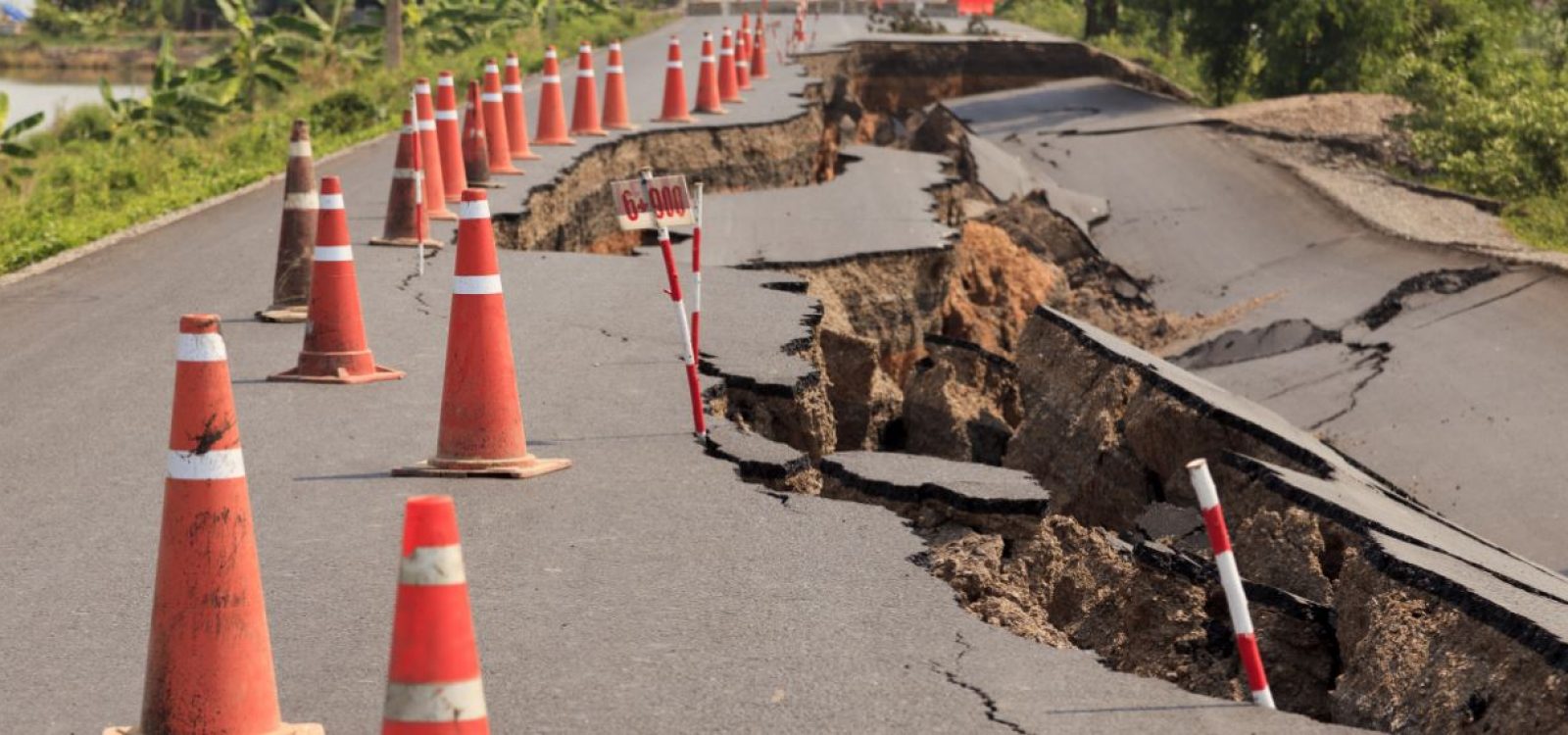
Judgment summary – Earthquake Commission v ICNZ Inc. and others
As a result of the 2010 and 2011 earthquakes, significant areas of residential land in Christchurch suffered damage causing an increased risk of flooding and liquefaction.
The flooding vulnerability is caused by three processes, which have all been affected by changes to land:
- pluvial flooding, which is caused by run-off that is in excess of the capacity of the stormwater systems and causes excess water to flow over land, has been exacerbated in situations where subsidence of land has occurred, as that can change overland flow paths or reduce gradients to both rivers and streams;
- fluvial (or river) flooding, which is caused by a flowing of water which exceeds the capacity of rivers and streams and floods adjacent land, has been effected by lateral spreading reducing the widths of rivers and increasing riverbed levels; and
- tidal flooding, which is caused by extreme sea levels in coastal areas and lower rivers that flood adjacent land, has been worsened because of the settling of land to a level below extreme tide levels.
Preliminary results of flood modelling work show that there are up to 13,500 low lying residential properties in the Christchurch area that may now be materially more susceptible to flooding as a result of the reduced land levels.
In addition, a number of properties have become more vulnerable to liquefaction damage from future earthquakes. This is broadly because the affected land now has a thinner “crust”, being the non-liquefiable layer of earth between the ground surface and the water table. This reduction in the thickness and quality of the crust renders the land more prone to liquefaction damage and less able to support a house in the event of a future earthquake.
The Earthquake Commission drafted a policy responding to potential flooding claims. A policy dealing with potential liquefaction claims is yet to be developed. This proceeding sought declarations sanctioning EQC’s policy.
The issues
The High Court, sitting as a full Court (comprising Heath, Kós, and Gilbert JJ), considered a number of issues in this proceeding. These included:
- whether increased flooding vulnerability and increased liquefaction vulnerability is natural disaster damage to residential land;
- whether increased flooding vulnerability and increased liquefaction vulnerability is natural disaster damage to residential buildings;
- whether the court has the jurisdiction to make declarations in anticipation of the policy being put into use;
- whether EQC’s policy was appropriate; and
- whether a claimant, later challenging a decision of EQC, can bring a claim by way of ordinary proceedings rather than judicial review.
Natural disaster damage
Natural disaster damage is defined in the Earthquake Commission Act 1993 (Act) as “any physical loss or damage to the property occurring as the direct result of a natural disaster”.
There is an argument that although the land has undergone physical changes as a direct result of the earthquakes, these changes do not constitute present physical loss or damage. Rather, they increase the vulnerability of the land to sustain such loss or damage in a future natural disaster, namely a flood. However, the Court decided that:
“As a direct result of the earthquakes, there has been a disturbance to the physical integrity of the land, reducing it in volume and leaving the body of the land in a changed physical state. This changed physical state has resulted in the land being more vulnerable to flooding, thereby adversely affecting its use and amenity. The primary use of residential land is as a platform for building. Land that is materially more prone to flooding is plainly less suitable for this purpose and is less habitable. The criteria for physical loss or damage are satisfied. We conclude that Increased Flooding Vulnerability constitutes natural disaster damage to insured residential land for the purposes of the Act.”
They also noted that the same argument applied in relation to liquefaction, and that therefore both increased flooding vulnerability and increased liquefaction vulnerability is natural disaster damage to residential land.
Counsel appearing on behalf of various homeowners also argued that increased flooding vulnerability and increased liquefaction vulnerability is natural disaster damage to residential buildings, even where a house has sustained no physical damage, but has merely “ridden down” with the land. The Court disagreed with this approach, and said that:
“Where there has been physical damage to land resulting in subsidence, but there has been no change to the physical state or integrity of the structure or materials that comprise the body of the house erected on the land including its foundations, we consider that this should be regarded as damage to the residential land, not to the residential building. We consider that this fits with the scheme of the Act which is unusual, if not unique, in providing separate cover for residential land and for residential buildings.”
Jurisdiction to make the declarations sought
The High Court reaffirmed the view of the Supreme Court in Mandic v Cornwall Park Trust Board [2011] NZSC 135, [2012] 2 NZLR 194 that a declaratory judgment may be given in anticipation of an act which has not yet been done. They said that:
“We are satisfied that, while this Court should be reluctant to deal with academic questions, or applications that do no more than to ask the Court to provide an advisory opinion, there is a sufficient evidential foundation on which appropriate declarations could be granted.”
EQC’s policy
The policy proposed by EQC covered both how to determine whether land has suffered an increase in flooding vulnerability, and then how claims for that land can be resolved.
Land will be determined to have increased flooding vulnerability if they satisfy the threshold tests in relation to movement of land (in total and for one event), observable land damage, and diminution in value of the property. The policy also provides for exceptions where land does not pass all of the threshold tests.
Settlement of claims is proposed to be on the following basis:
- if the residential building would need to be removed in order to enable repairs to the land to address the increased flooding vulnerability, EQC will settle based on the diminution of value;
- if resource consent would be required in order to enable repairs to the land to address the increased flooding vulnerability, EQC will settle based on the diminution of value, unless the claimant demonstrates that he or she can obtain resource consent and will effect the repairs;
- if the residential land has been sold by the claimant after the earthquake event recognised as causing increased flooding vulnerability, EQC will settle based on the diminution of value;
- in all other cases, EQC will pay the repair cost unless that cost is disproportionate to the diminution of value, having regard to the circumstances of the claimant (including his or her stated intentions in relation to repair of the land).
The reason for claims to be settled on this basis is recorded by the Court as follows:
“The most obvious way of remediating land that has sustained Increased Flooding Vulnerability is to raise it to its pre-earthquake level by overlaying it with compacted soil. However, this will often not be feasible. In many cases it would require removing the house, any other structures, and trees and gardens. Further, placing significant quantities of fill on land can create geotechnical problems affecting its stability, including by increasing its vulnerability to lateral spreading and settlement in the event of a further earthquake causing liquefaction of the underlying soil. This is obviously a serious issue with land that is already prone to liquefaction, as is the case with many of the affected properties.
There is the added complication that raising the land may adversely affect surface drainage patterns and increase the risk of inundation on neighbouring properties. For this reason, there are limitations on the amount of fill that can be imported, particularly in designated flood management areas where many of the affected properties are located. The earthworks required to repair most affected properties in these flood management areas will exceed the permitted maximum of 0.3m in height and 10m³ in volume. Resource consent would also be required for all properties outside the flood management areas if there is a need to raise the land by more than 0.3m, as is the case with approximately half of the affected properties in these areas. These difficulties are compounded by the fact that the insured residential land comprises only the footprint of the house and the surrounding eight metres of land.”
The policy therefore allows for payment of the repair cost where repairs are technically feasible and will actually be carried out, and otherwise payment for the loss of market value of the property.
The Court decided that:
“we consider that the Commission’s Policy providing for settlement of claims on a diminution of value basis in appropriate cases is consistent with its obligations under the Act.”
An argument was made that introducing fill to the land was not the only way of alleviating the increased flooding vulnerability, and that an alternative could be to raise the building situated on the land. The Court decided that this option was not available under the Act:
“The Act separately insures residential land and residential buildings against natural disaster damage. Where claims are to be met by repair or reinstatement, this must be repair or reinstatement of the insured property, in this case the residential land. Residential land is not repaired or reinstated if all that has happened is a modification to the residential building.”
The Court therefore decided that EQC is entitled to make the policy for settlement of the claims, as long as it does not apply it mechanically, acts in good faith, and doesn’t exclude consideration of other relevant factors.
Challenges to EQC’s decisions
EQC asked for a declaration that a claimant, wishing to challenge a decision of EQC in relation to a claim or a payment, must apply by way of judicial review. The High Court said that:
“the Commission’s statutory obligations to make good or make payment, under s 29(2), create entitlements and rights in insured persons. Those rights, along with the insurance provided in ss 18, 19 and 20, create definite obligations. Those obligations are enforceable by ordinary action, notwithstanding that they arise under statute, and that the Commission exercises statutory powers.”
They therefore decided that claims in respect of insurance under sections 18 to 20 and 29 of the Act are not confined to judicial review proceedings, but may also be brought by ordinary proceedings.
Read the decision.
This article was originally published on Duncan Cotterill.
CPD: Actuaries Institute Members can claim two CPD points for every hour of reading articles on Actuaries Digital.






